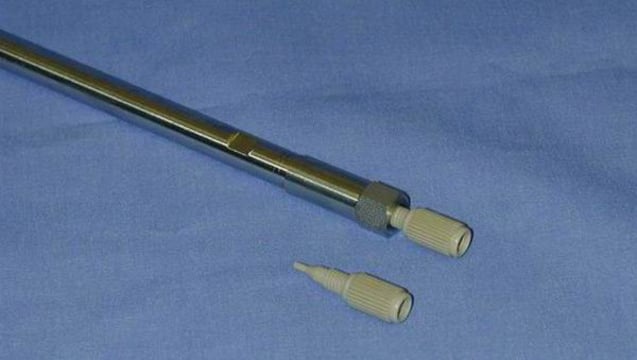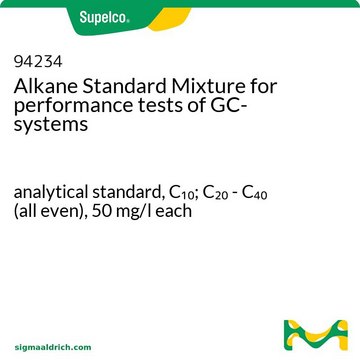59560
SUPELCOSIL™ LC-Si (5 µm) HPLC Columns
L × I.D. 2 cm × 4 mm Supelguard Guard Cartridge pkg of 2 ea, Guard Cartridge holder required for use
Sign Into View Organizational & Contract Pricing
All Photos(1)
About This Item
UNSPSC Code:
41115700
eCl@ss:
32110501
Recommended Products
product name
SUPELCOSIL™ LC-Si Supelguard Cartridge, 5 μm particle size, L × I.D. 2 cm × 4 mm
Agency
suitable for USP L3
Quality Level
packaging
pkg of 2 ea
technique(s)
HPLC: suitable
L × I.D.
2 cm × 4 mm
matrix active group
silica phase
particle size
5 μm
pore size
120 Å
application(s)
food and beverages
compatibility
use to protect LC-Si, LC-3Si
separation technique
hydrophilic interaction (HILIC)
normal phase
Looking for similar products? Visit Product Comparison Guide
Choose from one of the most recent versions:
Certificates of Analysis (COA)
Lot/Batch Number
Don't see the Right Version?
If you require a particular version, you can look up a specific certificate by the Lot or Batch number.
Already Own This Product?
Find documentation for the products that you have recently purchased in the Document Library.
J J Agren et al.
Lipids, 37(6), 613-619 (2002-07-18)
Normal-phase HPLC resolution of sn-1,2(2,3)- and x-1,3-DAG generated by partial Grignard degradation from natural TAG was carried out with both (R)-(-) and (S)-(+)-1-(1-naphthyl)ethylurethane derivatives. The diastereomeric sn-1,2- and sn-2,3-DAG derivatives were resolved using two Supelcosil LC-Si (5 microm, 25 cm
Mohammed Shahid Ali et al.
Journal of pharmaceutical and biomedical analysis, 43(1), 158-167 (2006-08-05)
A new HILIC method has been developed for the simultaneous determination of pseudoephedrine hydrochloride (PSH), diphenhydramine hydrochloride (DPH) and dextromethorphan hydrobromide (DXH) in cough-cold syrup. Mobile phase consists of methanol:water (containing 6.0 g of ammonium acetate and 10 mL of
R Lovlin et al.
Journal of chromatography. B, Biomedical applications, 679(1-2), 196-198 (1996-04-26)
The stereospecific HPLC assays reported for ketoprofen (KT) mainly utilize indirect approaches. These assays involve the formation of amide diastereomeric derivatives, which are then separated by chromatography. The advantages of indirect methods include versatility, good sensitivity and cost effectiveness; however
Our team of scientists has experience in all areas of research including Life Science, Material Science, Chemical Synthesis, Chromatography, Analytical and many others.
Contact Technical Service





